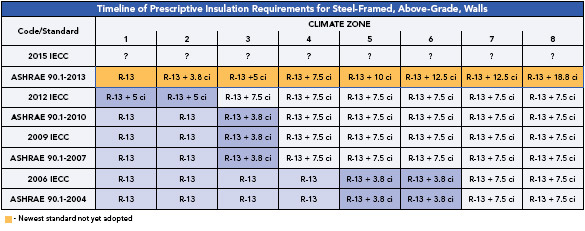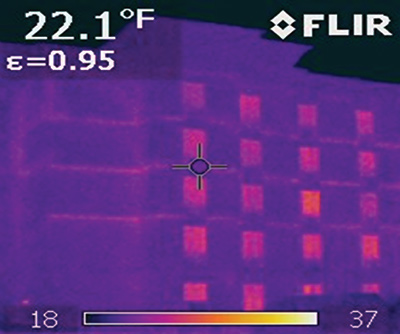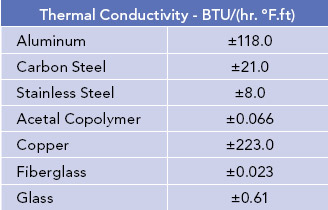Conforming to Code
Today, two primary baseline building energy codes may be adopted by states and local jurisdictions to regulate the design and construction of new buildings: the International Energy Conservation Code® (IECC) and the ANSI/ASHRAE/IESNA Standard 90.1 Energy Standard for Buildings except Low-Rise Residential Buildings. The IECC addresses all residential and commercial buildings, while ASHRAE standards cover commercial buildings. The IECC adopted, by reference, ASHRAE 90.1; that is, compliance with ASHRAE 90.1 qualifies as compliance with IECC for commercial buildings.
The original standard ASHRAE 90 was published in 1975. In 1999, the standard was placed on continuous maintenance, which allowed it to be updated several times a year due to rapid changes in technology and energy prices. In 2001, the standard became ASHRAE 90.1, and has been updated in 2004, 2007, and 2010, with associated increases in scope and energy-efficiency targets. The 2013 update of ASHRAE Standard 90.1 is a major revision, containing more than 100 changes from the 2010 version. Standard 90.1-2010 and 90.1-2013 together produce almost 50 percent energy savings from the 2004 version.
 |
Click to view large table image Courtesy of Knight Wall Systems |
Most states apply the standard or equivalent standards for all commercial buildings while others do so for all government buildings. While energy codes are widely considered an efficient way to reduce energy use in the built environment, adoption of standards by states can lag their introduction by a matter of years. ASHRAE 90.1 2007 is the most up-to-date version of the energy code that's been adopted by many jurisdictions and local codes.
One specific and important part of the energy codes currently being implemented calls for an increased performance requirement on exterior wall assemblies, especially with steel-framed walls. The overall goal here is to increase the performance of the wall assembly in resisting the transfer of thermal energy so the conditioned space requires less work by the HVAC system to maintain desirable conditions.
While the code doesn't actually state that exterior insulation is required, it does state that much higher performance numbers must be met. It is widely accepted that the simplest, most expected, and versatile way to increase a wall assembly's thermal performance is by use of insulation applied to the exterior of the wall. Exterior insulation is typically marketed as “continuous insulation” or ci. Ci has been an energy code requirement since the release of ASHRAE 90.1-2004, and the 2007 code calls for more ci in various climate zones. The U.S. Green Building Council's Leadership in Energy and Environmental Design (LEED) rating system has followed suit, increasing its prerequisites in the Energy and Atmosphere category. LEED 2009 requires ci per the 2007 ASHRAE code, and the current version of LEED ups that requirement to conformance with ASHRAE 2010.
ASHRAE 90.1 defines ci as insulation that is continuous across all structural members without thermal bridges other than fasteners and service openings. It is installed on the interior, exterior, or is integral to any opaque surface of the building. Fasteners include screws, bolts, nails, etc, meaning that furring strips, clip angles, lintels, and other large connection details are excluded, rendering standard wall assemblies obsolete and calling for a change in the assembly away from batt-insulated stud cavities. The most recently adopted version of the Washington State energy code, one of the most stringent in the country, has even gone so far as to state the specific amount of cross-sectional area of metal allowed to penetrate the insulation and still qualify as ci.
Why Batt-Insulated Cavities Don’t Work
Batt insulation limits thermal protection to the wall cavity and creates a thermal bridge for heat transfer through framing studs. In a steel-framed building, thermal shorts reduce the R-value of cavity-insulated wall systems by more than 50 percent. In addition, thermal bridging encourages condensation and moisture build-up that can further reduce the R-value of cavity batts as well as encourage mold and mildew and shorten the service life of the entire wall assembly.
Thermal Bridging—The Key to Effective Insulation
Understanding the dynamics of thermal bridging is critical to specifying the right insulation for a given project. Heat energy transfers from warm environments to cold environments, that is, from the interior of a building to the exterior of a building and vice-versa in warm climate zones. Conduction heat transfer is the underlying cause of thermal bridging. The heat energy transfers through connected materials where one part of the connected materials, or assemblies, are in a warm environment and the other end of the connected materials, or assemblies, are in a cold environment; in other words, exterior wall assemblies where one side of the wall is a conditioned space and the other side is an unconditioned space, or outside. The rate at which the heat energy transfers is directly related to the thermal conductivity of the materials connecting, or bridging, the two environments. Metal, for instance, is highly conductive of heat, which is why it is used for activities where conductive heat transfer is important such as cooking food on a stovetop, radiators, etc. The goal is to keep the overall thermal conductivity of the materials bridging the two environments as low as possible, therefore increasing the assembly's ability to resist heat transfer.
 |
|
Image courtesy of Knight Wall Systems |
Adding insulation into an exterior wall assembly is primarily to help increase the resistance to heat transfer through the entire assembly, both inwards and outwards. Bridged materials with a low resistance to heat transfer—and consequently very conductive—which pass through highly resistant materials create a path for heat to follow and “go around.” This is also known as a thermal short, or following the path of least resistance. As an example, metal framing members, such as steel studs, penetrating the insulation added to the assembly, create a bridge and allow heat to transfer right through the insulation at 16 inches on center.
Penetrations are pathways for heat to transfer and are known as thermal bridges. The greater the pathway, the greater the amount of heat energy is lost, creating higher operating costs among other risks. To help reduce this, the assembly design must reduce the amount of conductive material bypassing the insulation, use greater thermally resistant materials within the assembly, and finally break the bridge, or connection, of materials transferring heat energy.
 |
|
Courtesy of Knight Wall Systems |
When a wall's R-value is considered, it is important to realize the assembly's R-value is not the rated R-value of the insulation. This is proven with batt-insulated steel stud wall assemblies by the ASHRAE Standard 90.1, which states that R-19 batt insulation in a steel framing application only has an effective, or real, R-value of 7.1, less than 40 percent of its rated value. To clarify, the R-19 batt insulation only has an R-value of R-7.1 when installed in a 16-inch steel stud assembly. But the assembly's R-value is actually 9.2.—the R-7.1 batt plus the R-value of the gypsum board, air films, etc.









